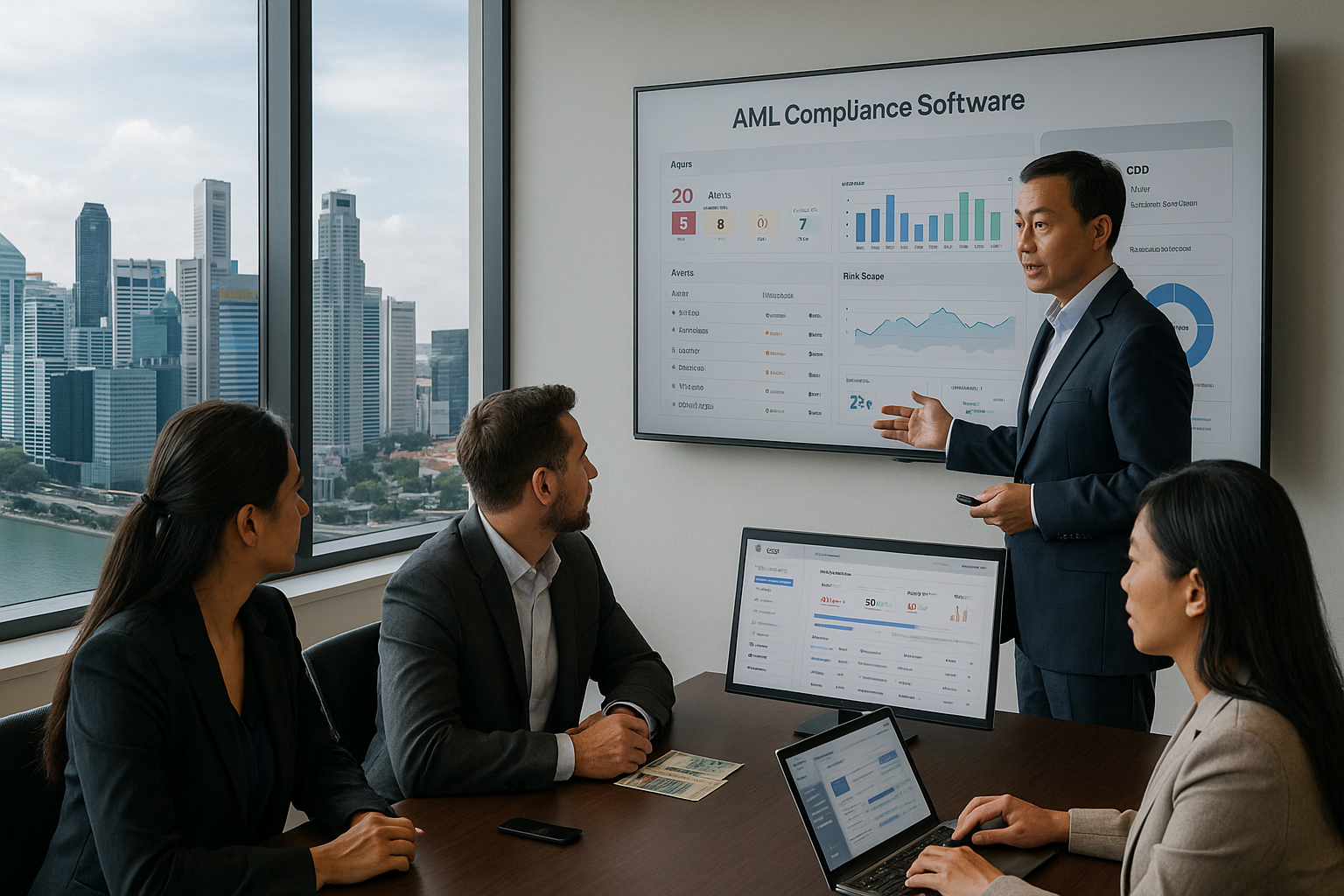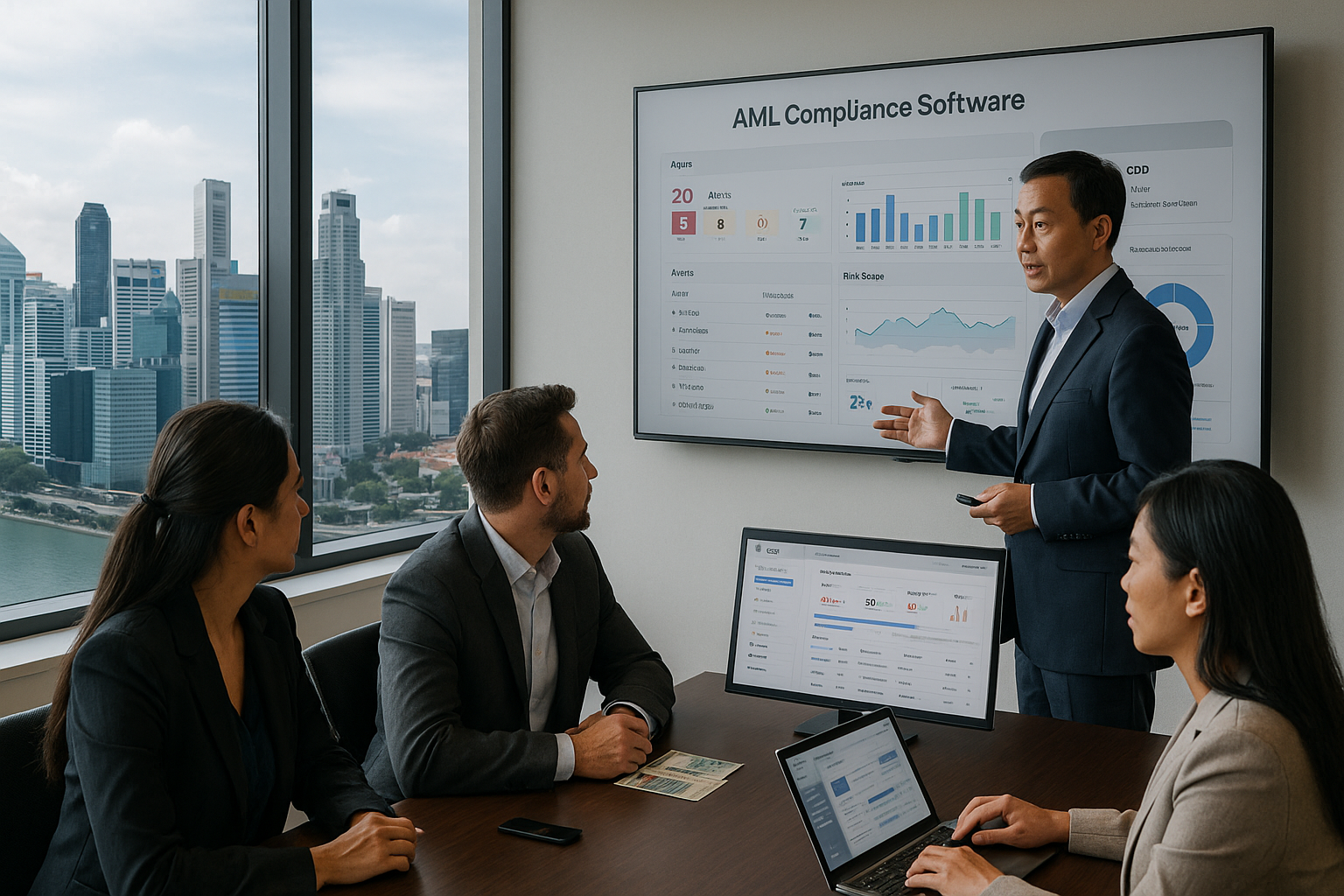AML Screening Software in Australia: Myths vs Reality
.svg)
Australia relies heavily on screening to keep bad actors out of the financial system, yet most people misunderstand what AML screening software actually does.
Introduction: Why Screening Is Often Misunderstood
AML screening is one of the most widely used tools in compliance, yet also one of the most misunderstood. Talk to five different banks in Australia and you will hear five different definitions. Some believe screening is just a simple name check. Others think it happens only during onboarding. Some believe screening alone can detect sophisticated crimes.
The truth sits somewhere in between.
In practice, AML screening software plays a crucial gatekeeping role across Australia’s financial ecosystem. It checks whether individuals or entities appear in sanctions lists, PEP databases, negative news sources, or law enforcement records. It alerts banks if customers require enhanced due diligence or closer monitoring.
But while screening software is essential, many myths shape how it is selected, implemented, and evaluated. Some of these myths lead institutions to overspend. Others cause them to overlook critical risks.
This blog separates myth from reality through an Australian lens so banks can make more informed decisions when choosing and using AML screening tools.

Myth 1: Screening Is Only About Checking Names
The Myth
Many institutions think screening is limited to matching customer names against sanctions and PEP lists.
The Reality
Modern screening is far more complex. It evaluates:
- Names
- Addresses
- ID numbers
- Date of birth
- Business associations
- Related parties
- Geography
- Corporate hierarchies
In Australia, screening must also cover:
- DFAT sanctions lists
- AUSTRAC expectations on ongoing due diligence
- Politically exposed persons specific to the region
- Adverse media from credible local sources
True screening software performs identity resolution, fuzzy matching, phonetic matching, transliteration, and context interpretation.
It helps analysts interpret whether a match is genuine, a near miss, or a false positive.
In other words, screening is identity intelligence, not just name matching.
Myth 2: All Screening Software Performs the Same Way
The Myth
If all vendors use sanctions lists and PEP databases, the output should be similar.
The Reality
Two screening platforms can deliver dramatically different results even if they use the same source lists.
What sets screening tools apart is the engine behind the list:
- Quality of fuzzy matching algorithms
- Ability to detect transliteration variations
- Handling of abbreviations and cultural naming patterns
- Matching thresholds
- Entity resolution capabilities
- Ability to identify linked entities or corporate structures
- Context scoring
- Language models for global names
Australia’s multicultural population makes precise matching even more critical. A name like Nguyen, Patel, Singh, or Haddad can generate thousands of potential matches if the engine is not built for linguistic nuance.
The best screening software minimises noise while maintaining strong coverage.
The worst creates thousands of false positives that overwhelm analysts.
Myth 3: Screening Happens Only at Onboarding
The Myth
Many believe screening is a single event that happens when a customer first opens an account.
The Reality
Australian regulations expect continuous screening, not one-time checks.
According to AUSTRAC’s guidance on ongoing due diligence, screening must occur:
- At onboarding
- On a scheduled frequency
- When a customer’s profile changes
- When new information becomes available
- When a transaction triggers risk concerns
Modern screening software therefore includes:
- Batch rescreening
- Event-driven screening
- Ongoing monitoring modules
- Trigger-based screening tied to high-risk behaviours
Criminals evolve, and their risk profile evolves.
Screening must evolve with them.
Myth 4: Screening Alone Can Detect Money Laundering
The Myth
Some smaller institutions believe strong screening means strong AML.
The Reality
Screening is essential, but it is not designed to detect behaviours like:
- Structuring
- Layering
- Mule networks
- Rapid pass-through accounts
- Cross-border laundering
- Account takeover
- Syndicated fraud
- High-velocity payments through NPP
Screening identifies who you are dealing with.
Monitoring identifies what they are doing.
Both are needed.
Neither replaces the other.
Myth 5: Screening Tools Do Not Require Localisation for Australia
The Myth
Global vendors often claim their lists and engines work the same in every country.
The Reality
Australia has unique requirements:
- DFAT Consolidated List
- Australia-specific PEP classifications
- Regionally relevant negative news
- APRA CPS 230 expectations on third-party resilience
- Local language and cultural naming patterns
- Australian corporate structures and ABN linkages
A tool that works in the US or EU may not perform accurately in Australia.
This is why localisation is essential in screening software.

Myth 6: False Positives Are Only a Technical Problem
The Myth
Banks assume high false positives are the fault of the algorithm alone.
The Reality
False positives often come from:
- Poor data quality
- Duplicate customer records
- Missing identifiers
- Abbreviated names
- Unstructured onboarding forms
- Inconsistent KYC fields
- Old customer information
Screening amplifies whatever data it receives.
If data is inconsistent, messy, or incomplete, no screening engine can perform well.
This is why many Australian banks are now focusing on data remediation before software upgrades.
Myth 7: Screening Software Does Not Need Explainability
The Myth
Some assume explainability matters only for advanced AI systems like transaction monitoring.
The Reality
Even screening requires transparency.
Regulators want to know:
- Why a match was generated
- What fields contributed to the match
- What similarity percentage was used
- Whether a phonetic or fuzzy match was triggered
- Why an analyst decided a match was false or true
Without explainability, screening becomes a black box, which is unacceptable for audit and governance.
Myth 8: Screening Software Is Only a Compliance Tool
The Myth
Non-compliance teams often view screening as a back-office necessity.
The Reality
Screening impacts:
- Customer onboarding experience
- Product journeys
- Fintech partnership integrations
- Instant payments
- Cross-border remittances
- Digital identity workflows
Slow or inaccurate screening can increase drop-offs, limit product expansion, and delay partnerships.
For modern banks and fintechs, screening is becoming a customer experience tool, not just a compliance one.
Myth 9: Human Review Will Always Be Slow
The Myth
Many believe analysts will always struggle with screening queues.
The Reality
Human speed improves dramatically when the right context is available.
This is where intelligent screening platforms stand out.
The best systems provide:
- Ranked match scores
- Reason codes
- Linked entities
- Associated addresses
- Known aliases
- Negative news summaries
- Confidence indicators
- Visual match explanations
This reduces analyst fatigue and increases decision accuracy.
Myth 10: All Vendors Update Lists at the Same Frequency
The Myth
Most assume sanctions lists and PEP data update automatically everywhere.
The Reality
Update frequency varies dramatically across vendors.
Some update daily.
Some weekly.
Some monthly.
And some require manual refresh.
In fast-moving geopolitical environments, outdated sanctions lists expose institutions to enormous risk.
The speed and reliability of updates matter as much as list accuracy.
A Fresh Look at Vendors: What Actually Matters
Now that we have separated myth from reality, here are the factors Australian banks should evaluate when selecting AML screening software.
1. Quality of the matching engine
Fuzzy logic, phonetic logic, name variation modelling, and transliteration support make or break screening accuracy.
2. Localised content
Coverage of DFAT, Australia-specific PEPs, and local negative news.
3. Explainability and transparency
Clear match reasons, similarity scoring, and audit visibility.
4. Operational fit
Analyst workflows, bulk rescreening, TAT for decisions, and queue management.
5. Resilience and APRA alignment
CPS 230 requires strong third-party controls and operational continuity.
6. Integration depth
Core banking, onboarding systems, digital apps, and partner ecosystems.
7. Data quality tolerance
Engines that perform well even with incomplete or imperfect KYC data.
8. Long-term adaptability
Technology should evolve with regulatory and criminal changes, not stay static.
How Tookitaki Approaches Screening Differently
Tookitaki’s approach to AML screening focuses on clarity, precision, and operational confidence, ensuring that institutions can make fast, accurate decisions without drowning in noise.
1. A Matching Engine Built for Real-World Names
FinCense incorporates advanced phonetic, fuzzy, and cultural name-matching logic.
This helps Australian institutions screen accurately across multicultural naming patterns.
2. Clear, Analyst-Friendly Explanations
Every potential match comes with structured evidence, similarity scoring, and clear reasoning so analysts understand exactly why a name was flagged.
3. High-Quality, Continuously Refreshed Data Sources
Tookitaki maintains up-to-date sanctions, PEP, and negative news intelligence, allowing institutions to rely on accurate and timely results.
4. Resilience and Regulatory Alignment
FinCense is built with strong operational continuity controls, supporting APRA’s expectations for vendor resilience and secure third-party technology.
5. Scalable for Institutions of All Sizes
From large banks to community-owned institutions like Regional Australia Bank, the platform adapts easily to different volumes, workflows, and operational needs.
This is AML screening designed for accuracy, transparency, and analyst confidence, without adding operational friction.
Conclusion: Screening Is Evolving, and So Should the Tools
AML screening in Australia is no longer a simple name check.
It is a sophisticated, fast-moving discipline that demands intelligence, context, localisation, and explainability.
Banks and fintechs that recognise the myths early can avoid costly mistakes and choose technology that supports long-term compliance and customer experience.
The next generation of screening software will not just detect matches.
It will interpret identities, understand context, and assist investigators in making confident decisions at speed.
Screening is no longer just a control.
It is the first line of intelligence in the fight against financial crime.
Experience the most intelligent AML and fraud prevention platform
Experience the most intelligent AML and fraud prevention platform
Experience the most intelligent AML and fraud prevention platform
Top AML Scenarios in ASEAN

The Role of AML Software in Compliance

The Role of AML Software in Compliance









